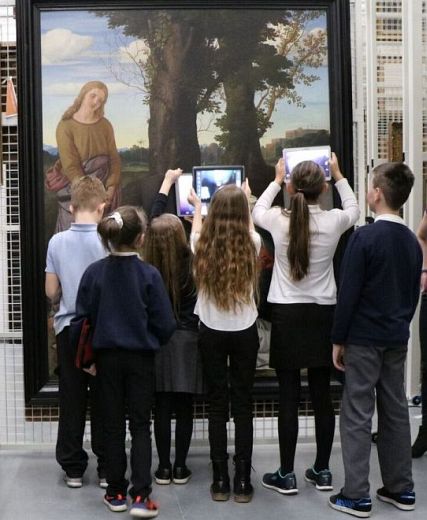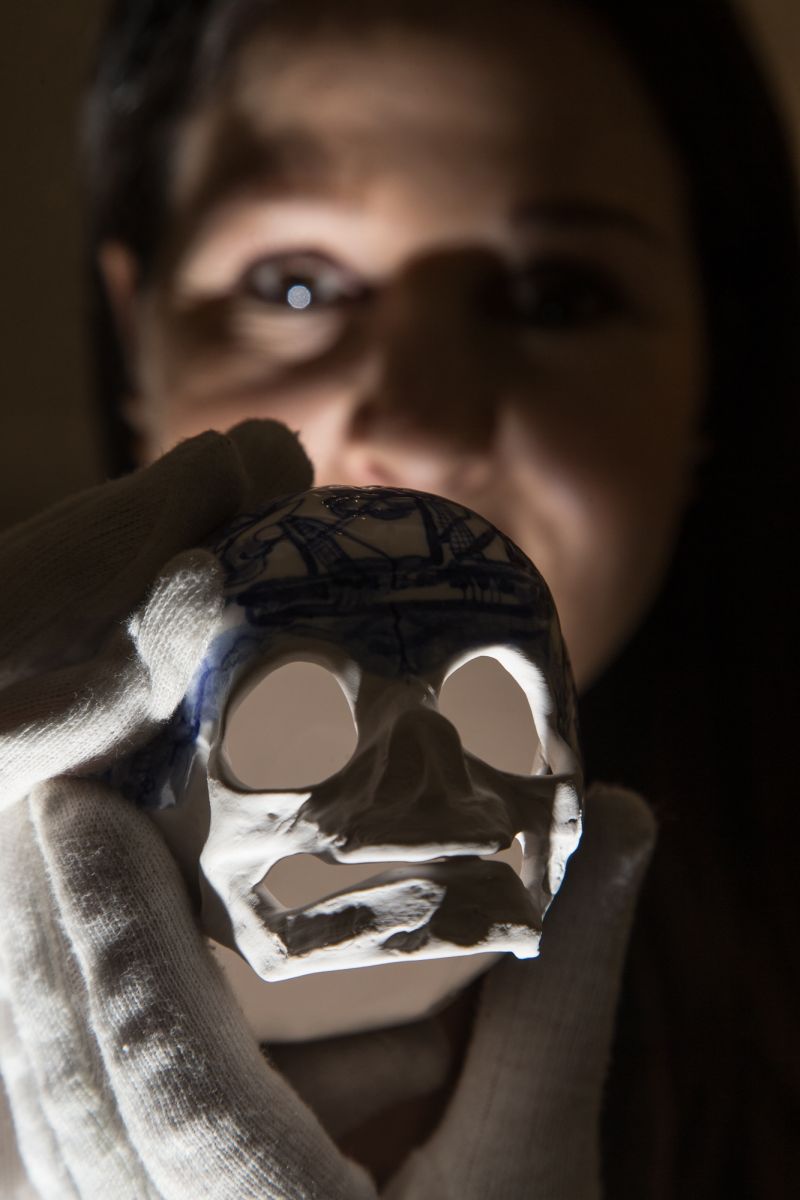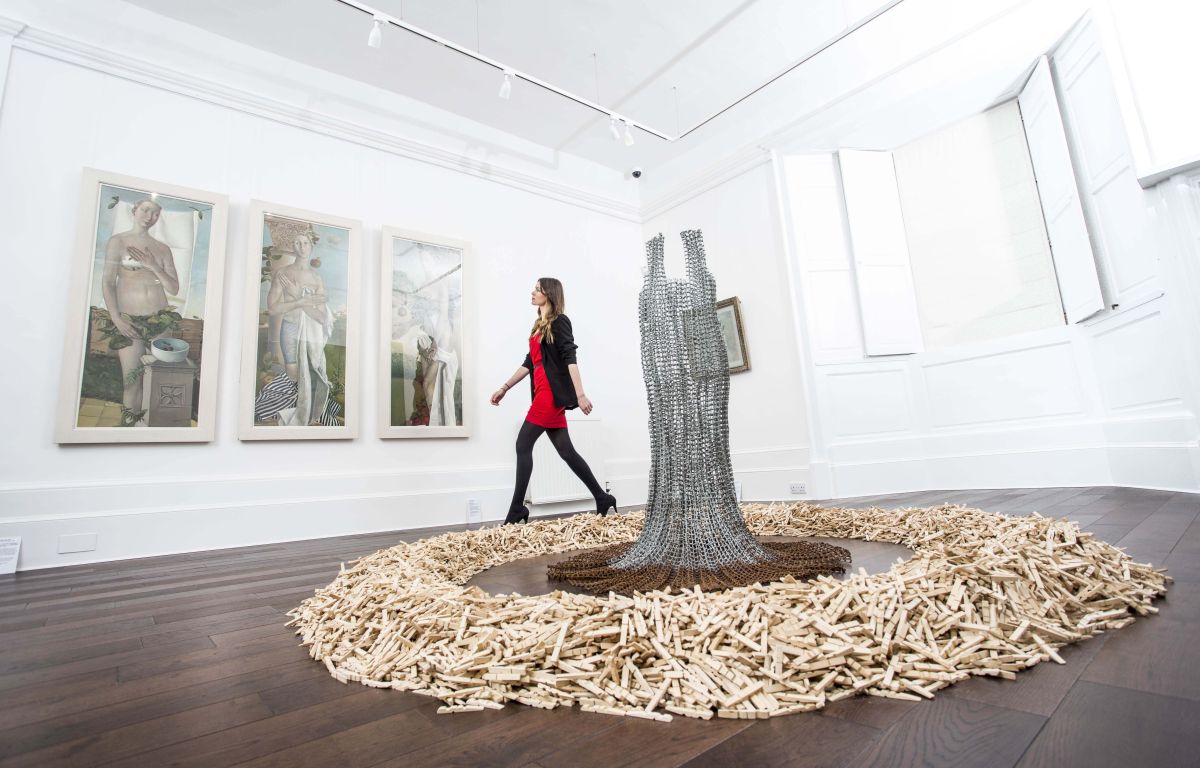In her tenth annual Christmas Satire Aberdeen Voice’s Suzanne ‘Old Susannah’ Kelly revisits the events of the past year and revisits last year’s satire, ‘A Night At Storybook Glen’.
In that tale last year we learned how Angus performed on his first shift at the night security guard at Storybook Glen. Tonight we join Angus at his new job.
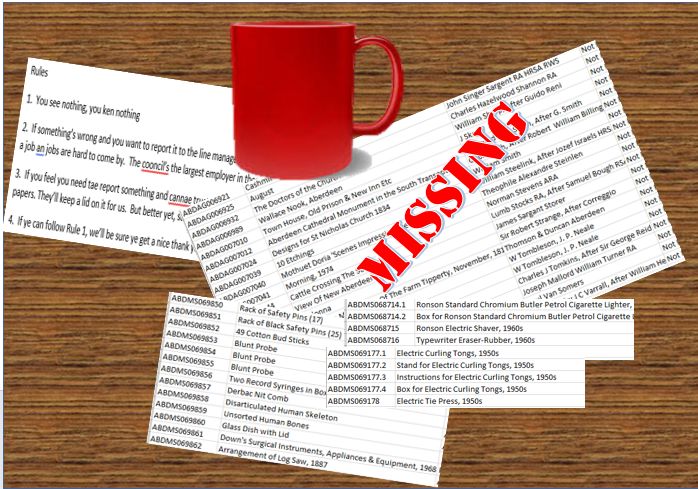 Angus straightened his tie, gave his lapels a pull to straighten his jacket and stepped off the No. 19 Hydrogen bus onto Union Street. Then he promptly slipped on the permanent temporary wooden decking, cracking his head on the wooden parklet (in other words a bench with a planter container filled with vandalised plants, fast-food wrappers and cigarette butts).
Angus straightened his tie, gave his lapels a pull to straighten his jacket and stepped off the No. 19 Hydrogen bus onto Union Street. Then he promptly slipped on the permanent temporary wooden decking, cracking his head on the wooden parklet (in other words a bench with a planter container filled with vandalised plants, fast-food wrappers and cigarette butts).
“Oh! ma heid!” he muttered, getting up and staggering towards the Souless bar, where he intended to have a quick weak beer before his 9pm shift at The Aberdeen Museum & Art Gallery would start.
Celebrating his new job since leaving Storybook Glen seemed a good idea.
“What’ll it be?” shouted the bar person over the heads of the noisy shouting/hugging throng.
“Ah’ll jist hae a Nanny State Shandy, mak it a half,” he smiled.
Just then a round-faced ginger-haired man in foggy spectacles popped his head around the bar.
“Oh no, my old pal Angus here wants something a wee bit stronger, don’t you pal? I hear you’re that new night security guard at the Musuem; you’ll be wantin tae stay awake.
“Here, have one of my Torry snowballs,” he said, pushing a glass to Angus.
Angus cocked his head to one side, and looked at the drink a bit dubiously.
He suddenly remembered the last time he’d had one of Pablo’s cocktails was last year at Storybook Glen’s drinks marquee, where he wasn’t sure whether half the things he’d seen that night were real or not.
He hadn’t been able to sleep properly for days afterwards, and found himself talking as long and as nonsensically as any ACC councillor.
“Pablo, ta aa the same, but Ah’m startin’ ma new job i noo, an’ need tae look sharp. By the wye, how did ye ken Ah’m on nights i noo?”
“Both the Night Time Economy Manger an’ the Alternate Night Time Economy Managers told me. Now just get that down yer neck an’ you’ll have a crackin’ time at the museum.”
Thinking both ‘fit’s an ‘Alternative Night Time Economy Manager’ and ‘Ach why nae?’ Angus downed the drink, thanked Pablo, and went on his merry way.
Who knows? Who cares? It’s a free dinner at the Marcliffe.
The snowy streets were dark, and here and there a fallen over pensioner, woman in high heels or people with mobility issues moaned for help as they slipped, slid and fell on the wooden pavements.
‘Anither normal night in the Deen’ Angus thought, watching brawling men spilling out of a pub swinging at each other and shouting.
Before long, turning down the beautifully illuminated street sign that read ‘elmo tree’ hanging over Belmont Street (one of twelve English-made signs a snip at £400k the lot), Angus found himself approaching the front of the Art Gallery.
He could see the curator standing just inside the doorway.
“It’s 2 minutes and 17 seconds to nine – I hope you’re going to be more punctual tomorrow night Angus!” the curator impatiently simmered, tapping at his watch.
“Angus, I think you met Tom, Dick and Harry; they’ll take it from here. I’m off to the award ceremony.”
“Thank you sir,” said Angus
“Err, which award ceremony is that?”
The curator gave a sign and an eyeroll, answering:
“Who knows? Who cares? It’s a free dinner at the Marcliffe.” And off he went.
Angus said ‘hullo’ to the three guards who stood before him. He had met them on his interview.
Angus heard a ‘SPLAT’ and the whole museum suddenly got eerily darker
They were all retired, but like so many people these days, chose to work minimum wages for the fun and excitement of it rather than enjoying their retirement.
Tom spoke first.
“Fine seein’ ye Angus; welcome. Ah ken ye’ve got yer flashlicht, an’ ere’s the keys.”
Dick chimed in:
“An’ ye’ll be needin this instruction manual; tells ye aa ye need tae ken aboot workin here at nicht. Can get a bittie spooky, ken – “ he broke off.
“But ach, ye’ll be jis’ fine.”
Finally Harry spoke, thrusting a bag at Angus, saying:
“Ye’ll hae a gran’ time Angus, jist dinna mind ony noises ye hear or onythin’ funny ye think ye micht be gan on. Sometimes the lichts play funny tricks.
“An’ if yer feelin’ i cauld, jist hae some o’ this BrewDog Tactical Nuclear Penguin or Sink the Bismarck – we thocht ye micht like a wee gift fae us on yer first day.”
They toured the museum, now devoid of the last of its visitors. Tracey Emin’s artwork, basically a neon sign,made entirely by others based on a scrawled few words of hers through neon light which reflected strangely on a nearby copy of Michelangelo’s David, a statue of Robert the Bruce, and a few paintings.
‘Fit is it wi’ Aiberdeen thinkin neon signs should be elevated tae expensive artwork an’ road signs?’ Angus thought.
For a fleeting moment the light almost made it seem as if the statues could talk – and wanted to. He shook his head and the effect was gone.
The four men meandered through the museum’s many rooms and floors, they passed priceless artworks by Scottish masters, portraits, battle scenes.
They stood under the great glass oculus window when Angus heard a ‘SPLAT’ and the whole museum suddenly got eerily darker as the light seemed to lower.
The three other security guards laughed.
“Aye, ye looked spooked already pal; that’s jist a seagull splattering the windae wi’ sh*te.” Tom laughed.
Dick said:
“Aye, it came as a huge surprise tae the architects that seagulls sh*te near the sea. Fa wid hae thocht?”
“Didnae stop them gettin’ plenty o’ awards though – fer gettin’ rid o’ the auld marble stairs veneer, an putting a pottycabin on the roof. The original architects are nae thrilled at aa” added Harry.
Tom broke across him:
“Ya mean the original architects widna be thrilled.”
“At’s fit Ah’m sayin’,” Harry answered.
Angus thought the three exchanged a quick glance, but then they ushered him onward.
Peering at the Inventory, Angus thumbed through
They were now in the basement, or ‘Subterranean Treasure Hub No 19’ as a sign read. Huge mountainous shelves were piled high with items the museum had collected.
There were old sewing pattern books, pieces of granite, an old A-Z, unsold copies of the Evening Express from 1973, some old glass jars and more. Angus couldn’t help wonder why anyone in their right mind would keep this junk.
Almost as if sensing Angus’ misgivings about the quality of these items, Tom volunteered:
“Tae some fowk thon auld boots wi’ hols in em, auld used tin cans an’ the like are jist rubbish.”
‘Too right’ thought Angus.
“But,” continued Tom, “we ken they’re valuable, cause the city accepted thon donations an’ officially logged them here in this invinterry.”
They had gone through a door labelled ‘SECURITY’ and Tom pointed to a printed document marked ‘Inventory’. This was a few hundred pages in size.
Peering at the Inventory, Angus thumbed through it read a few lines as the other three men stepped into an ante room marked ‘NO ENTRY NOT EVEN YOU – KEN!’
“Afore we leave ye tae it, we’re, errr… jist gan tae git a few things we … err … left ahind, like ma piece box an ma shoppin’ fae Poondland.
“Noo, Angus, ye lisnin? – ye can ging onywye ye like in i museum, but nae past ess door.
“Nivver! – nae metter fitivver happens! Ye hear ma?”
Angus just shrugged, and left them to it. As he heard banging, and scraping noises from that room, he thumbed through the inventory:
ABDMS095514 Gilda Le Fevre Label, 1920-1980
ABDMS095515 Jane Doe’s Thimble, 1920-1940
ABDMS095516 Jane Doe’s broken Thimble, 1886
ABDMS095517 Pattern for Six-Section Hat, 1936-1980
ABDMS095518 Pattern for Six-Section Hat, 1936-1980
ABDMS095519 Oval Hat Pattern, 1936-1980
ABDMS095520 Jane Doe’s Brim Pattern, 1936-1980
ABDMS095521 Jane Doe Sewing, 1990
ABDMS095522 Photograph of Gilda LeFevre, 1990
ABDMS095523 Photograph of Jane Doe, 1936-1980
ABDMS095524 Photograph of Gilda LeFevre and Employees, 1990
ABDMS095525 Photograph of Gilda LeFevre and Employees, 1990
ABDMS095526 Photograph of Pantomime, 1944
ABDMS095527 Photograph of Pantomime, 1944
ABDMS095589 Results Past, 2017
ABDMS095590 Comment No 20.
ABDMS095591 Comment No 15.
ABDMS095592 Comment No 16.
ABDMS095562 Valuable Gift, 2011
ABDMS095533 Income Tax Record, 1944-1945
DISAGBS000057
DISAGBS000058
DISAGBS000059
DISAGBS000060
DISAGBS000061
DISAGBS000062
DISAGBS000063
“Fit’s a hat maker’s broken thimble daein in a museum?” He asked
“Nae idea, but ye can be sure it’s worth a fair few bob.” Tom shouted back
“Fits somebody’s auld tax record daein’ here?”
“Nae idea.” answered Dick
“Fit’s ess aboot? – items ca’d ‘Comment 20’ an’ hunners o’ blank lines?”
“Dinnae fash yersel loon, the important museum curator staff an’ cooncil will understan’ aa thon technical stuff.”
“Hey – how come there’s aa this stuff marked ‘missin’?” Angus asked.
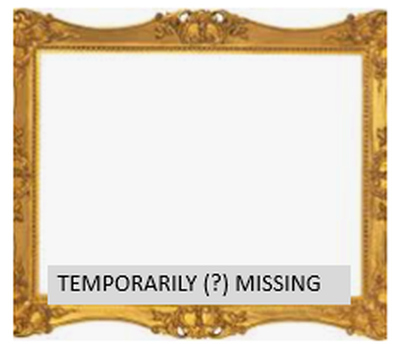 Tom, Dick and Harry had stepped out of the back room.
Tom, Dick and Harry had stepped out of the back room.
Each now had on a huge backpack. Tom had a suitcase on wheels.
Dick had a big cardboard box with what looked like a gold frame sticking out of the top of it, and Harry had a big sack.
“Angus, jist bide here, watch i telly, hae a drink an’ a nap, and we’ll see ye aboot 9 the morn’s mornin. Dinna worry aboot onythin’ an’ pey nae heed tae ony noises ye think ye micht be hearin’.” Tom said
“Aye, an’ read thon instruction manual if onythin’ … errr … unusual pops up. See ye the morn.” said Dick.
“An’ mind fit Ah tellt ye. BIDE OOT O’ ESS ROOM…. Guid Nicht!” said Harry, shutting the door to the forbidden room.
The three turned to leave when with a clatter a selection of silver spoons fell out of Dick’s coat’s sleeve. Scooping them up Angus said:
“Hemen, hing on, looks like ye drapped summin. Ah think ah got ’em aa. See yiz the morn … an’ thanks for the drink an’ yer help.”
The three men traded furtive looks and off they went out the security guard entrance. For some reason they turned off the light outside of the exit door, and the street outside was in darkness.
Angus watched as they pulled on their covid masks (‘for safety no doubt’ Angus thought), and drew their hats and scarves over their faces, their uniforms covered by their long dark coats. They threw their bags and boxes into the back of the van. Jumping in, they sped off into the night.
“Hey, ye’ve nae switched yer heidlights on”- Angus called after them, but they had sped out of sight.
Angus sat down and opened the bag he’d been left; pulling out a bottle of Tactical Nuclear Penguin he thought ‘At least this will be a bit more normal than Storybook Glen was’.
He thumbed through the inventory half-interested by the repeated words ‘missing’, ‘damaged’, ‘stolen’. On the desk he saw an old Press & Journal; its headlines read ‘Wood to save Torry by turning it into an industrial zone – Hoorah!’ and ‘Exclusive whitewash of oor role in Trump Menie development’.
Folding the paper up into a pillow, he put his head down and soon was fast asleep.
# # #
Angus slowly woke from a dream
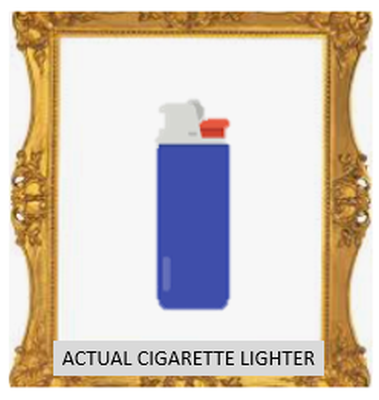 He thought he heard voices.
He thought he heard voices.
Grabbing his flashlight and having a quick swig from his hip flask, followed by more fortified beer, he stealthily made his way to where the sound was coming from.
Approaching the centre of the building, he stopped to listen; he heard men and women chattering, the pop of a champagne cork, and glasses clinking.
Angus stood out of sight around a corner. The lights were on, and a few dozen well-dressed men and women were milling around the entrance foyer.
“.. so we donated 400 grubby auld cigarette cards, an’ got a 10k tax break; it wis hilarious!”
“I ken, right?,” said a woman’s voice “We donated some auld bits o’ stationery we were gan tae fling oot – seriously, an auld eraser, some index tabs. Chucked in a cigarette lighter or twa, and ken? We didnae hae tae pey tax fer a year. I’m affa gled ye suggested it; thanks again!”
Laughter ensued. Glasses clinked.
“Fit a crackin’ award ceremony; wis richt fine hearin’ Stew tell mair o’ his hilarious jokes doon the Marcliffe. Cooncil pickin’ up the tab Ah’d expect, aye?”
Angus kept hidden out of sight; he realised that these people were some of the town’s great and the good – and a few councillors.
“Hey, div ye still hae thon siller punch bowl roon at yer place? Ah widna mind a shottie o’ it in a couple o wikks fer the big ONE Christmas perty, if ye can spare it?”
Angus stayed out of sight and caught snippets of further conversations.
“Looks a richt sotter, dis it nae? Lik tuppence o’ mix. A metal box on tap o’ a MacKenzie mesterpiece? Nae cohesive use o’ materials, nae relation tae the existing proportions or aesthetic. It wis bound tae win awards. Did ye ken MacKenzie’d daen the Waldorf?
“D’ye think they’d let some hacks come alang an’ stick a metal box on tap o’ the Waldorf?”
Further laughter followed; Angus heard more glasses clinking.
“Fa’s carin’ fit it looks like?” a woman’s voice could be heard asking,
“The point is it wis a much-needed consultation an’ construction job – an’ fit’s mair vibrant an’ dynamic than a few extra crisp Jane Austen’s in your wikkly brownie?”
“The £36 mil wis weel spent – Ah mean, it’s nae like ony o’ us or we’re faimilies will hae tae pey for it.”
“A shame it didna help like we thocht it wid though … tae push the £180 million revamp o’ thon gerdens, Ah mean that wis the original plan, wis it nae?”
“Ach weel, at least the gerdens are aa dug up noo; thon space-hoggin, unprofitable trees awa – well maist o’ them, an’ thankfully some shops are gan in. Mair consultation, mair construction, an’ … errr …. some mair goodies up for grabs an’ aa.”
“Mind, ‘at was richt sleekit o’ ye tae announce with nae prior warning that the gallery wid fa’ tae bits if it didna get a new roof an’ a new a’thin else. Weel done.”
“Aye, an’ thon lottery ticket sellin’ racket wis genius an’ aa.”
“Foo lang dis onybody think ess new buildin’ work will stan’ up? That windae better be water ticht, an’ let’s hope that despite fit it looks like, that box winna ivver cause ony funny stresses or load issues ower time.”
“But twa years owerdue – how’d ye sell ‘at tae the public again?”
“Get this.” A short balding man said.
“We got the P&J tae say – an’ Ah hae tae laugh – we were ower spent an’ owerdue because ‘We had to get it right!’”
The room erupted in laughter.
Just then the doors burst open and three people, looking a bit the worse for wear staggered in, arms over each others’ shoulders, singing.
“Here’s oor Wullie!” one of the revellers shouted.
“Aye, an’ the Alternative Night Time Manager sure seems tae hae livened him an’ Al up a bit, aye?”
Angus guessed it must still be snowing, as the newly-arrived trio were covered in white powder. The conversations continued.
“So fylst the average mannie in the street says ‘oh fit a bonny buildin! ‘it’s won an award’ or ‘we get tae see a heap o’ local artwork’ an’ aa that crap, we get some tax write affs for donating tat, a wee thank you fae the commissioning an’ construction folk, AND…”
The voice paused for a moment
“An’ aa the priceless airtwork, siller an’ nick-nacks ye could ivver want or need tae decorate wi’, or use tae pad up yer retirement fund.”
An anxious woman’s voice was heard next
“But will fowk nae twig that it’s aa o’ us fa’s donating absolute rubbish? Will they nae catch on that the good stuff’s naewye tae be found?”
The man who’d just spoken answered her,
“Nah, nah, dinna worry yersel; hae anither scoof o’ bubbly. Aa the donations are anonymous – unless somebody’s gan for a big publicity stunt; an’ naebody’ll ivver ken fa donated aa thon auld muck.
“Efter aa, thon auld bits o’ auld crap, unsellt papers, broken thimbles an’ fit hiv ye, are of course – should onybody ask – IMPORTANT PIECES O’ OOR HERITAGE.
“Onybody says stuff’s gan missing? Weel: fa’s gan tae clipe? Certainly nae oor local papers – by the wye, gled tae see yiz aa here the nicht an’ hope yer likin’ yer Marischal Square offices. We were happy tae help ye get thon rent breaks an’ perks; fit’s a few mill between chums? The morn, Ah’ve some mair stories for ye tae rin, but the nicht’s a social occasion. Here’s tae us!”
“HERE’S TAE US!!” the room answered back.
As Angus slowly crept away he heard a voice:
“Love how the granite an’ marble looks in yer gerden; lucky for yersel it’s aff limits an’ yer nae subject tae ess right tae roam stuff like the rest o’ us, as befits a mannie in yer position….”
“Ye’ll be in the hoose o’ heroes afore lang; oor very ain king o hydrogen…”
“…chose affa weel indeed… nah, nae The Shamen – drug references, ye ken? The beer brewing fowk – nah, too critical o’ Donald an’ made a few ither controversial missteps as weel …. St Machar the founder? Nah, nae famous enough. If we’d brocht up Glover fowk micht start askin’ aboot eez hoose an’ its contents…. nae punk musicians obviously – that would hae a toxic effect… an’ certainly nae St Fittick…”
Angus decided not to tangle with this crew and silently backed away into the darkness of the museum.
Reaching his guard room again, he tried to make sense of what he’d just overheard. ‘Far’s tha instruction manual?’ he muttered, and finding it started to read.
Rules:
1. Ye see nithin, ye ken nithin
2. If summin’s wrang an’ ye want to report it tae the line manager, dinna!. Mind, ye’ve got a job an’ jobs are hard tae come by. The cooncil’s the biggest employer roon here.
3. If ye feel ye need tae report summin an’ canna trust yer line manager, jist tell the local papers. They’ll keep a lid on it for us. Better still, see Rule 1.
4. If ye can follae Rule 1, we’ll be sure ye get a nice pat on the heid fer daein fit yer tellt, ken fit ah mean?
 However, the various drinks he’d had this evening were starting to make him feel woozy, so he reached for another one, and had a few swigs from a few bottles.
However, the various drinks he’d had this evening were starting to make him feel woozy, so he reached for another one, and had a few swigs from a few bottles.
He was putting his head down as the loud voices seemed to go away.
He thought he heard the museum’s door shut, and soon it fell silent.
Angus went back to sleep, the words ‘hoose o’ heroes’ echoing in his mind.
Alas, Angus had only started this security job before the museum refit! The B.R. Premier Oil Lamp (now missing) was actually a magic lamp. When it had been in the museum, at midnight it’s magic brought ALL of the collection to life, kind of like that Ben Stiller series of films.
This included the (now missing) painting of the Gods on Olympus, 1798 by William Williams, including the (missing) Apollo and Daphne, also by Williams.
The architect who so carefully planned the Art Gallery, Mr Mackenzie, once roamed the halls when they were under construction shouting and screaming about his jewel being cannibalised and desecrated to the other gallery inhabitants when the magic lamp brought him to life; but he is heard no more.
The (missing) portrait of Sir Thomas More [sic] by Francesco Bartolozzi RA, After Hans Holbein, came to life and spoke with eloquent logic.
Back then the (now missing) Scottish Maid by an unknown master sat down to enjoy a (now missing) Still Life With Candlestick & Bread by Oskar Kokoschka with the handsome (now missing) James, Fifth Earl of Fife by Alexander Brodie.
Highland Cattle came out of (now missing) paintings and huge, beautiful artworks were filled with life.
During the day, some of that magic could be seen by visiting school children, some of whom might once have been inspired to make similar work. Some of these pieces could have provided historical information to artists, researchers and family historians. And heck, some people might just have enjoyed looking at these now missing windows on another world and time.
nasty glass-box architecture rose
But today no one will see their beauty or magic again: save the people who know where these and 1,577 items are that belonged to Aberdonians.
While this is a satire with no relation to anyone living or dead, should anyone in possession of stolen valuable, irreplaceable art taken from the public ever read these lines, may they encounter the karma they have earned.
As to those who were paid to protect the art that belongs to all of us, but whether by ignorance, negligence or deliberate acts stole, turned a blind eye or otherwise allowed this betrayal of trust, may such judases eventually get their karmic rewards too.
Anyone who knows where any of the missing 1,577 items are but who is keeping quiet is an accessory after the fact to theft. Time to unburden yourselves and fess up.
In Angus’ dreams hundreds of valuable portraits disappeared out of the museum into nowhere. Bits of old papers, bus tickets, broken biros were put in gilt frames in place of the fine art and hung on the gallery walls. And he dreamed people were in awe of the elevated rubbish because they were told it was art.
He dreamed that the things of real value in his beloved city were being stolen, bulldozed, built over, sold cheaply and cheap, nasty glass-box architecture rose over what was once a collection of historic, unique buildings.
He dreamed the land once loved by heroes and literal saints was now governed by incompetents, venal, greedy self-serving sneaks, egotistical ward- and attention-seeking narcissists and sex offenders.
He dreamed that the historic was written off as old-fashioned and the cheap, profiteering projects destroying the greenbelt and its wildlife, as well as the once-unique city scape, were hailed in a bought-and-paid for biased press as ‘vibrant’ ‘dynamic’ and ‘job-creating’.
He dreamed that same press had abandoned any pretence of journalistic independence, integrity and impartiality by taking millions from the taxpayer and were happy to mislead the public when it suited them if there was money in it.
Then Angus saw it was morning and that he wasn’t dreaming.
Angus decided he’d had enough. He picked a few causes to fight, some wrongs to try to right, and he set off to lobby, to investigate and to run for office.
He might not succeed, but he was going to try.
# # #
Follow up on the 2018 Christmas Satire ‘The Snowman’
The above video Aberdeen Voice satire covered some of the awful events of 2019 worldwide. There are at least two happy endings – the Russian caging of beluga whales is over, and the cages destroyed: public pressure did this.
And happily Donald J Trump is out of office and in court – many courts – and may soon be convicted of crimes.
Here’s to a little people power: just what Aberdeen needs. Elections are in May. You can still register to run.
- Comments enabled – see comments box below. Note, all comments will be moderated.
 Dear All
Dear All

 Angus straightened his tie, gave his lapels a pull to straighten his jacket and stepped off the No. 19 Hydrogen bus onto Union Street. Then he promptly slipped on the permanent temporary wooden decking, cracking his head on the wooden parklet (in other words a bench with a planter container filled with vandalised plants, fast-food wrappers and cigarette butts).
Angus straightened his tie, gave his lapels a pull to straighten his jacket and stepped off the No. 19 Hydrogen bus onto Union Street. Then he promptly slipped on the permanent temporary wooden decking, cracking his head on the wooden parklet (in other words a bench with a planter container filled with vandalised plants, fast-food wrappers and cigarette butts). Tom, Dick and Harry had stepped out of the back room.
Tom, Dick and Harry had stepped out of the back room. He thought he heard voices.
He thought he heard voices. However, the various drinks he’d had this evening were starting to make him feel woozy, so he reached for another one, and had a few swigs from a few bottles.
However, the various drinks he’d had this evening were starting to make him feel woozy, so he reached for another one, and had a few swigs from a few bottles.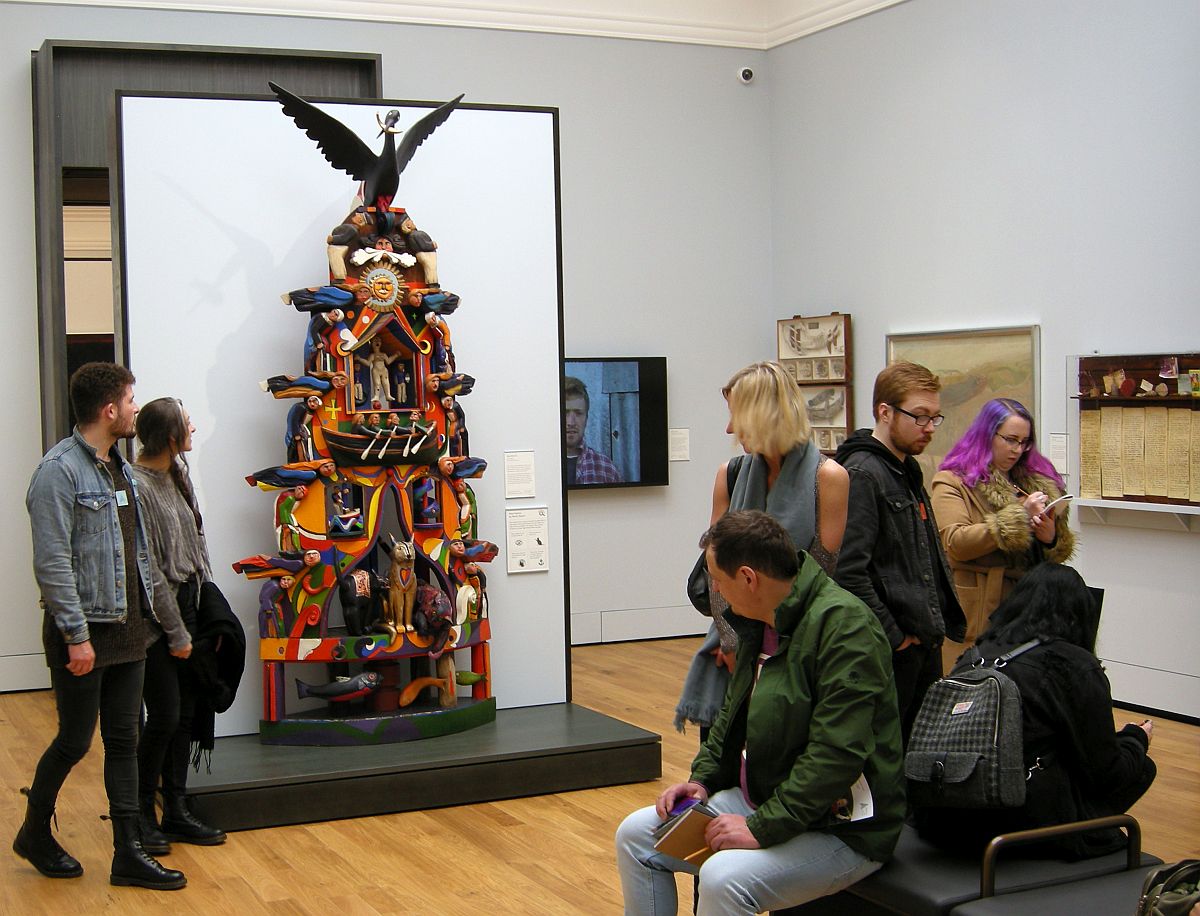

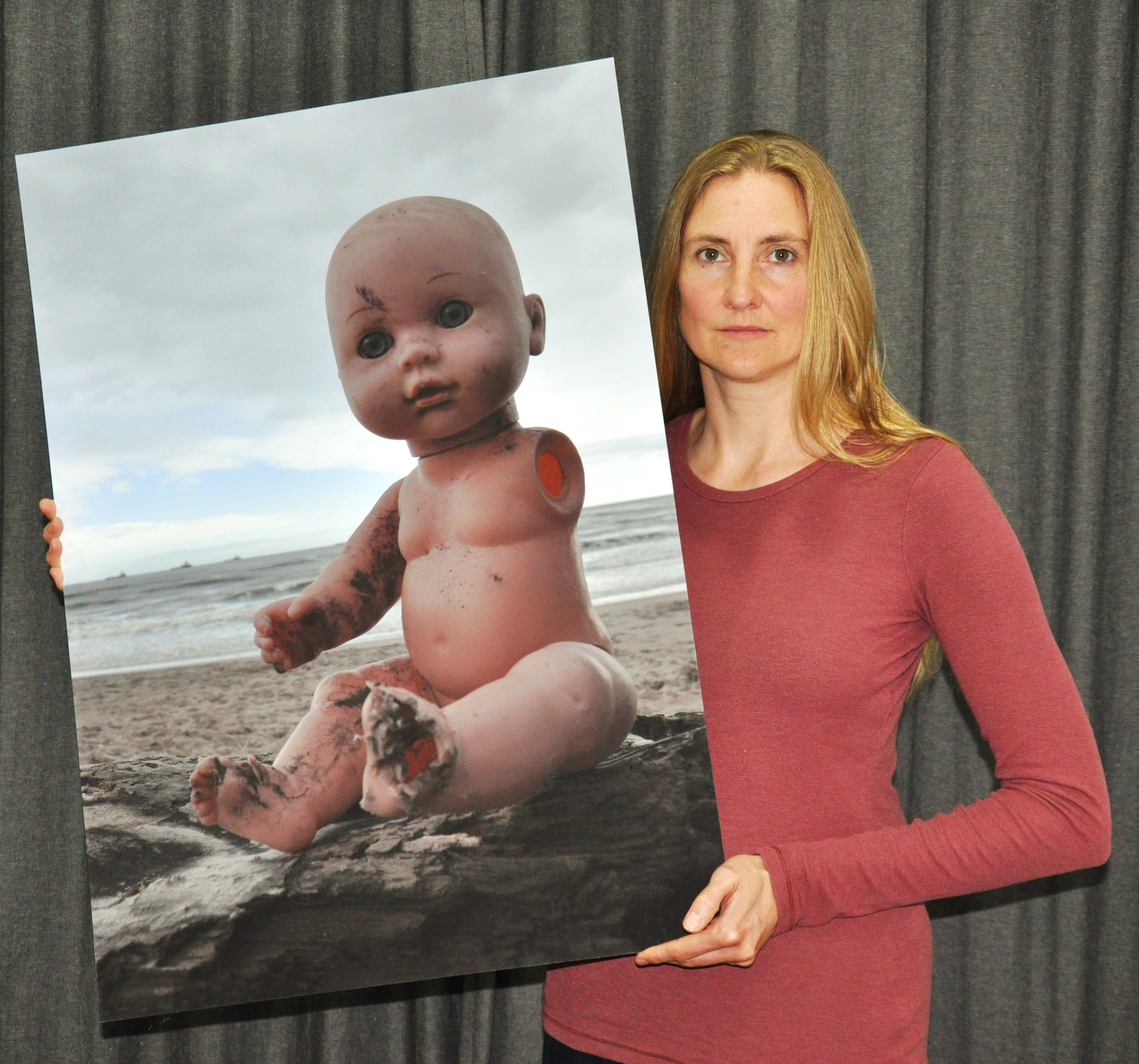
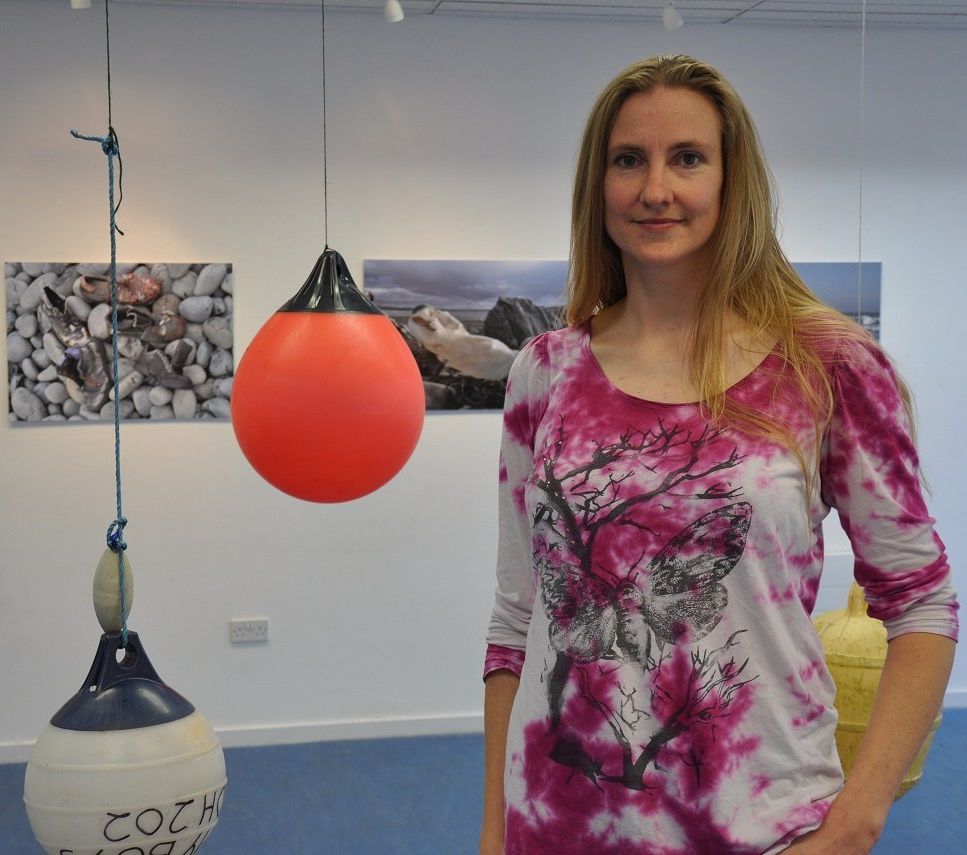
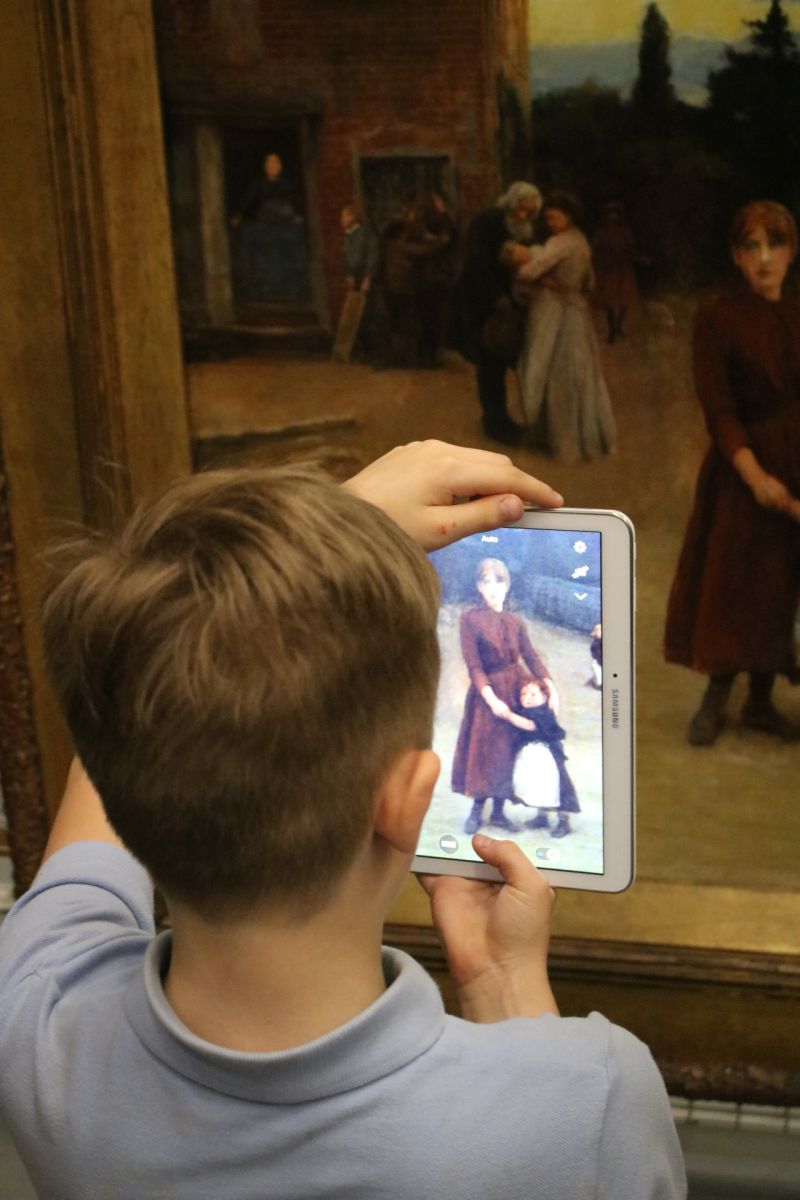 By Fin Hall.
By Fin Hall.